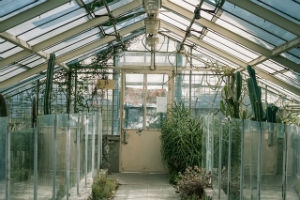You have no items in your shopping basket.
LED Lights Leading the Growth on Indoor Farming

LED lights are just about everywhere these days, from streetlights to our bedside lamps, and now in indoor farming. The use of LED lights for the agricultural sector haven’t gone unreported, but for indoor farming, LED lights could be the solution to feeding a growing population. With the world’s population estimated to hit 9.8 billion by 2050 - that’s a big strain on the already limited resources of land, light, and water. Taking into account changing weather patterns, there’s little room for creating poor yields.
What Is Indoor Farming?
Indoor farming appears at first to be what it says - farming of plants, but inside. However, recent technological developments have adopted a more futuristic approach. Indoor farming takes place on an industrial scale and employs the use of conveyor belts, thousands of plants, and many LED lights.
This kind of farming has significantly higher yields compared to traditional farming, and could be a way to provide high-quality produce throughout the year. Indoor farming challenges the traditional concept of needing a tractor and a belt of good-quality land - it brings the future closer to the everyday food that people consume.
Why LED Lights Are Used in Indoor Farming
Even a few years ago, indoor farming was difficult to envision with traditional lighting options. Plants that were sensitive to heat would quickly die under so much heat exposure, negating the benefits of the light.
LED lights are the perfect solution for advancing indoor farming, as they provide light without creating excessive heat. Plants can thrive under the right mixture of LED lights, without fear of wilting or scorching, thus gaining optimal light for fast growth. This gives indoor farmers a huge range of options for plants, which makes indoor farming even more commercially viable.
LED Lights Deliver Great Energy Savings
Indoor farming requires electricity to grow the plants; however, LED lights are a viable environmental option. LED lights produce large quantities of light, but use significantly less energy than traditional lighting options.
Businesses concerned about their spending on monthly energy bills could see huge savings of up to 90% within the first few months, which means lower costs for consumers. Where there are green initiatives, LED lights could be powered by sustainable causes and reduce their carbon footprint overall.
Years of Light with LED Lights
Indoor farming requires a lot of upfront investments, so it makes sense to find materials that will last for many years of use. LED lights are hardy and durable, which makes them perfect for use in a wide range of industries. Indoor farming will benefit from LED lights for many reasons, as staff won’t need to spend valuable time changing out bulbs.
LED lights are also programmable, so can be dimmed on a timer, or dimmed remotely to mimic natural light cycles. This means production in indoor farming could take place 24/7 with minimal supervision. Fast-growing salads and fruit plants could be produced year-round closer to supermarkets and outlets, which reduces travel, waiting time, and loss of important nutrition.
LED lights are a solution that make sense for many industries, and they are an interesting concept and development to keep an eye on in the coming years.
